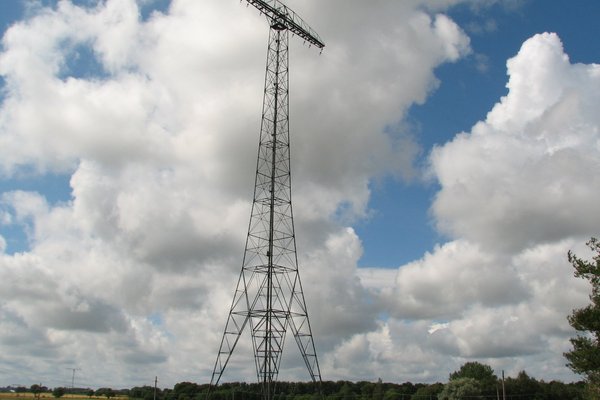Sweden
Grimeton Radio Station
The Grimeton Radio Station, Varberg holds an ultra-longwave radiotelegraph transmitter that was used for wireless transatlantic communication in the 1920s.
The site consists of transmitter equipment, including the aerial system with six 127 m high steel towers, and a neoclassical residential area with housing for the station staff. The Varberg station is the only one left from a global network that was planned after WWI to enhance communication between countries worldwide.
Community Perspective: although you can access the site at all hours, joining one of the guided tours is recommended to fully understand its workings.
Site Info
Official Information
- Full Name
- Grimeton Radio Station, Varberg (ID: 1134)
- Country
- Sweden
- Status
-
Inscribed 2004
Site history
History of Grimeton Radio Station
- 2014: Name change
- From "Varberg Radio Station" to "Grimeton Radio Station, Varberg"
- 2004: Inscribed
- Inscribed
- Type
- Cultural
- Criteria
- ii
- iv
Links
- UNESCO
- whc.unesco.org
- Official
-
- grimeton.org — Grimeton Radio Station World Heritage Site
- Related
-
- alexander.n.se — Link
All Links
UNESCO.org
- whc.unesco.org — whc.unesco.org/
Official Website
- grimeton.org — Grimeton Radio Station World Heritage Site
Related Resources
- alexander.n.se — Link
Community Information
- Community Category
- Secular structure: Burial
Travel Information
Recent Connections
-
Name changes
2014: to change from Varberg Radio Stat… -
Built in the 20th century
The transmitter was constructed between… -
European Route of Industrial Heritage
The radio station is also an anchor sit…
Connections of Grimeton Radio Station
- History
-
-
Second World War
During the Second World War 1939-1945, the station experienced a heyday, when it was Sweden's only telecommunication link with the rest of the world and Scandinavia's gateway to the outside world. Underwater communication cable connections had once again been quickly severed by nations at war and the radiotelegraphy transmissions were a link to the outside world.See en.wikipedia.org
-
- Architecture
-
-
Neoclassical architecture
-
Steel-Framed construction
framed "aerial system of six 127-m high steel towers" (UNESCO Description)
-
- World Heritage Process
-
-
Perfect Inscriptions
2004 -
Single Monuments
-
WHS with enclave
The map shows a small enclave. (Nomination file, p. 8)
-
- WHS on Other Lists
-
-
European Route of Industrial Heritage
The radio station is also an anchor site for the European Route of Industrial Heritage (wiki)See www.erih.net
-
- Timeline
-
-
Built in the 20th century
The transmitter was constructed between 1922 and 1924
-
- WHS Names
-
-
Name changes
2014: to change from Varberg Radio Station to Grimeton Radio Station, Varberg
-
News
No news.
Recent Visitors
Visitors of Grimeton Radio Station
- Adam Hancock
- Afshin Iranpour
- Alexander Barabanov
- Alexander Lehmann
- Ana Lozano
- Anna Wludarska
- Argo
- Ask Gudmundsen
- Atila Ege
- BeyondMonkey
- Bin
- Birgitte Sørensen
- Brendan Carroll
- Cezar Grozavu
- Cheryl
- Christer Sundberg
- Claire Bradshaw
- Clyde
- Daniel Chazad
- David Berlanda
- Dimitar Krastev
- Els Slots
- Eva Kisgyorgy
- Evgenii
- Filip Murlak
- Gary Arndt
- George Gdanski
- GeorgeIng61
- Hadrianus
- Harry Mitsidis
- henrik_hannfors
- Iain Jackson
- Ian Cade
- Ingemar Eriksson
- Ivan Rucek
- Jana and Matt
- Jan Korpeg
- Jarek Pokrzywnicki
- Jezza
- JobStopar
- Joel on the Road
- jonas
- Jonas Hagung
- Jonas Kremer
- Jonas Martinsson
- Karito Vies
- Kasia M.
- Kbecq
- Klaus Freisinger
- Knut
- Krijn
- Laurey
- Linneaaasaurus
- Luboang
- Luis Filipe Gaspar
- Maciej Gil
- marcel staron
- Martin
- Martina Rúčková
- MH
- Michael Ayers
- Mikko
- Milan Jirasek
- MMM
- nan
- Nihal Ege
- Patrik
- PeterH
- Peter Lööv
- Philipp Leu
- Philipp Peterer
- Randi Thomsen
- Roger Enarsson
- Roger Ourset
- Roman Bruehwiler
- Roman Raab
- Rudegirl
- Sabrina Liebehentschel
- Sandra!
- Schnitzel
- Sergio Arjona
- Shandos Cleaver
- Stanislaw Warwas
- Stefan Loov
- Stijn
- Svein Elias
- Szucs Tamas
- Tarquinio_Superbo
- Thomas Buechler
- Thomas van der Walt
- Thorben
- Tom Flaten
- triath
- Tsunami
- Vincent Cheung
- WalGra
- Walter
- WILLIAM RICH
- Wojciech Fedoruk
- YaroMir
- Zoë Sheng
Community Reviews
Show full reviews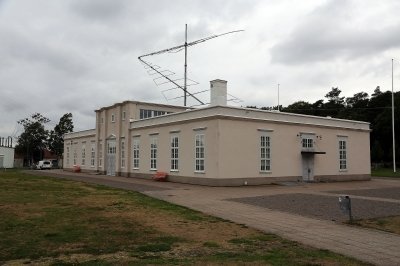
Visited Grimeton radio station with an English guided tour in August 2018 (I booked in advance through the official website for 120 SEK). It is rather small, but contains all the original equipment (produced by General Electric in the USA) in excellent condition plus some other related exhibits. Today radio station is occasionally used by amateur radio enthusiasts. The station is striking example of the pace of technology development. The wall mural shows 9 radio stations from Hawaii, USA (central radio was on Long Island), Poland, Wales and Sweden but only Grimeton station survived in its entirety. (Another murals probably with some irony compares the site with Giza pyramids, Great Wall and other big elephant site!). Totally agree with previous reviews that the site is unique, pleasant and interesting.
Keep reading 0 comments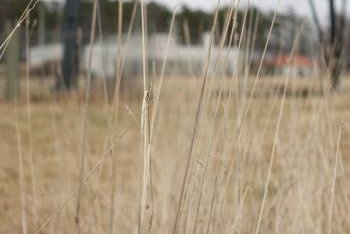
While the Swedish list is lacking in terms of world class sites, they definitively have a few odd and peculiar sites well worth exploring, Grimeton being one of those.
During the first world war communication lines had been cut showing the need for cable less communication. Long wave radio transmission was a first try at this. Radio Corporation of America set up a network centered in Long Island, New York, to connect the world. Sweden joined the effort as during the war families were unable to communicate with their relatives who had migrated to the US.
Grimeton connected to the RCA network in 1924 and it was also the last site to do so. By 1927 long wave radio transmission was already deprecated and eventually replaced with short wave transmissions. As such, most of the sites were torn down. If other sites had remained the obvious choice would have been to inscribe the whole network.
The site in Grimeton remained in use for longer as long wave transmissions can contact submarines which short wave transmissions fail to do. The Swedish navy used Grimeton as a backup site and kept the site operational till the 80s. By then this was a historic landmark. Nowadays the still fully operational site is put into use three times a year, one being Christmas.
Getting There
The next larger town is Varberg and it’s well connected by train to both Copenhagen and Gothenburg. However, from Varberg it’s still quite a …
Keep reading 0 comments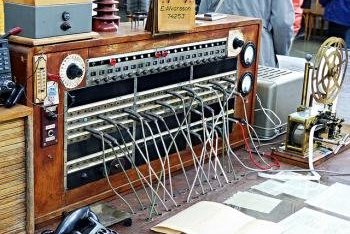
I visited this WHS in July 2016. Although I had visited the country once before, this is the first WHS I visited in Sweden and it didn't disappoint. 45 minute guided tours in English (Day shift) of the radio station are held at 13:00 and at 15:00. I arrived at around 11:00 and spent some time hiking alongside the antennae, reading the information boards, exploring the underground bunker and taking photos. The station is rightly proud to be a WHS and there are signs everywhere to display its inscription. The UNESCO plaque is just next to the visitor centre besides the water cooling 'fountains' while the actual UNESCO inscription certificate is displayed inside the radio station, above the entrance. An informative 20-30 minute video is displayed and I would recommend watching it before the tour as the tour really complements the video shown. The young tour guides really make an effort to give an overview of the main highlights of the station, its importance and its world heritage inscription. I was really surprised to find out that the tour guide knew about WH travellers and that she actually was an interested "beginner" herself. The Grimeton Radio Station (SAQ) is the last remaining fully-operational radio station of the 8 which were originally linked to Radio Central on Long Island, US (5 US stations + one in Caernarvon, Wales, one in Warsaw, Poland and this one in Varberg) which has the only working Alexanderson alternator radio transmitter in the world. It is …
Keep reading 0 comments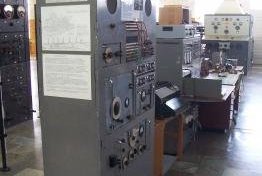
From looking at the positive reviews from some of my most trusted commentators on this site, I already knew that this was going to be a little more interesting than it first sounded. What I found certainly reinforced the reviews below and I found this to be a real gem of a WHS.
The site comprises of the radio station building and the long field of antennas stretching for 2km westwards. I actually got a good view of these towers the day before as I drove on the main road south, and from the fortress in Varberg proper, they looked pretty impressive and mixed in well with the rather beautiful wind turbines that lined all of the E6 that I drove on.
The presentation at the site was impeccable; the new visitors centre was a rather beautiful modernist cube, with lots of information and World Heritage themed goodies. The guided tour was pitched really well, it was thankfully was not exceedingly long. This meant that it did not get bogged down in the functioning of the machinery, which is important and interesting to some, but as a casual tourist I was glad it was kept to the basics.
One thing that really impressed me was how the importance of the machines was highlighted. Standing in front of a contraption that sent the signal out to the masts, the tour guide explained how this mechanism was run almost non-stop in the early years of the radio station. It pumped out Morse …
Keep reading 0 comments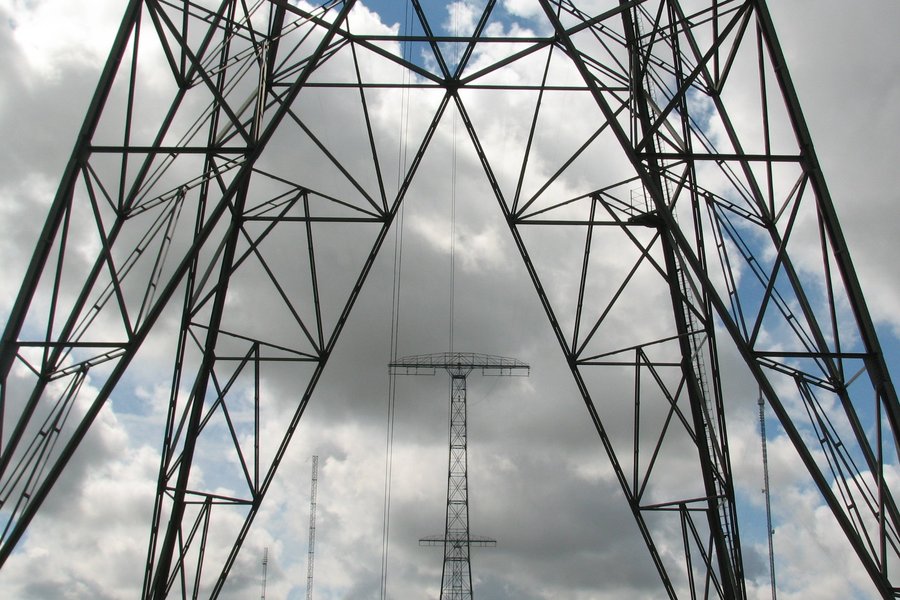
This is one of the sites that you just visit to tick them off, but then turn out to be quite pleasant. I'm not really an expert in technical matters, but the importance of this station in the early days of radio technology was well presented in a guided tour, a movie, and a small exposition (there is a brand new visitor centre with a café). After the tour, you can explore the site on your own, and there is a trail with informative signs leading to the massive antennae. It should be noted that even though the site is called Varberg Radio Station, it is actually located in the village of Grimeton, easily 12 km away. There are occasional buses, but since I had to rush to catch one of the 2 daily tours in English, I took a taxi. It is also recommended to spend some time in Varberg, a pretty seaside resort with an impressive castle and a quite un-Scandinavian beach ambience.
Keep reading 0 comments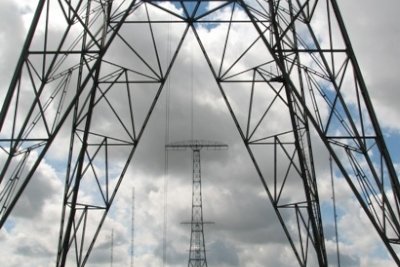
I didn't expect too much of this site, but the people running and conservating it have done a good job making the radio station's history come alive. A new visitor center has been constructed near the heritage objects/monuments. There's a cafe, a souvenir shop and you can buy tickets for a tour. After paying 50 Swedish kroner I was picked up promptly by an English-speaking guide.
The visible parts of the site consist of the six huge masts, a pool of cooling water with fountains, the pretty main building and two lesser buildings. Signals were only sent from here - a receiving station used to exist about 30kms away. Varberg (or Grimeton, to be more precise) was part of a global network that connected with New York. In the cafe, a mural shows the other locations of this ring: Poland, England, mainland USA and Hawaii. The introduction video shown at the site emphasizes the need for transatlantic communication in the early 1900s, as many Swedes had emigrated to the USA. This longwave radio station shortly filled the gap between the vulnerable underwater cables and shortwave (which was introduced widely in the year 1927).
In the surprisingly pretty Neoclassistic main building (which wouldn't look out of place in some fine Italian town), the machines that were necessary to operate the system are on show. Messages in morse code arrived here from a telegraph office in Gothenburg, where companies and the general public could deliver their messages to be sent …
Keep reading 0 comments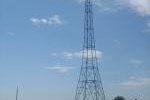
The Radio Station of Grimeton is easily accessed, slightly east of Varberg. Once, in the 1920:ies, Grimeton was part of a global network of long wave radio stations, linking the world for both business and personal telecommunication purposes. The station consists of six majestic 127-meter high steel towers and – just as majestic - transmitter equipment, housed in the station building. Today, Grimeton is the only station preserved in this global series of stations, a technology developed by Swedish-American Ernst F.W. Alexanderson. Next to the station building is a small museum and café where you can browse through the history of telecom as well as buy your tickets for the guided tours.
Keep reading 0 comments
